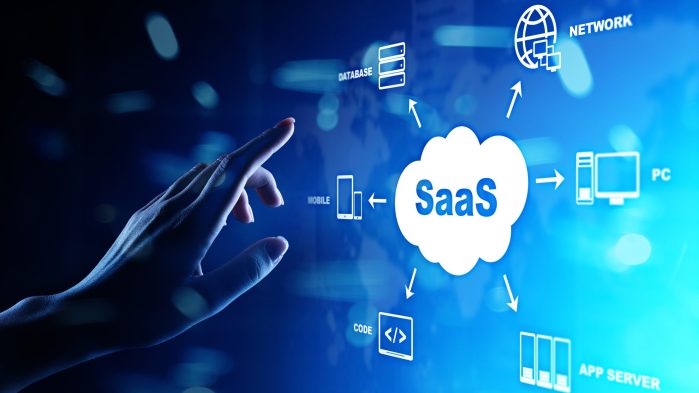How Software Development is Transforming the Future of the Automotive Industry
Explore how software development is revolutionizing the automotive industry, from connected cars to autonomous driving. Discover the key trends shaping the future of mobility and vehicle technology.
Read also: Buying or Building Your Business Software – How Do You Choose?
The automotive industry is currently experiencing significant changes thanks to advancements in software development. Presently, the vehicles are more than just transportation and are equipped with software that improves navigation, entertainment, and safety features, making each drive smoother and safer. This shift is due to software that manages everything from fuel efficiency to automated driving. These changes are making cars more eco-friendly and user-friendly.
These technological advancements are not just enhancing individual features but are transforming the overall vehicle ecosystem. With the rise of connected cars, software development is enabling vehicles to communicate with each other and with traffic management systems, paving the way for smarter transportation networks.
According to the reports, the global automotive software market is expected to grow at a CAGR of 7.88% to reach $116. 62 billion by 2032. Thus, if you are an automotive business looking to leverage these advancements, it is essential to collaborate with a skilled automotive software development services provider. They can help you enhance your product offerings but also ensure that you stay competitive in this rapidly evolving market.
This blog will help you understand how software development is transforming the automotive industry’s landscape and why it’s high time to get on the digital bandwagon. So, let’s begin.
The Rise of Connected Cars
The automobile industry is going through changes caused by connectivity in vehicles, the most promising among which are connected car solutions. These vehicles are already becoming moving PCs, which are, in fact, in a continuous process of interaction with the surrounding environment.
That is why with the help of internet connection cars have become mobile centers of entertainment. Presently, infotainment systems comprise smartphone interfaces and cloud services. A vehicle’s occupants are able to listen to music, get navigational assistance and access relevant content on the go.
Real-time data collection and analysis have opened new possibilities for vehicle performance:
1. Predictive maintenance alerts drivers to potential issues before they become problems.
2. Traffic pattern analysis helps optimize routes and reduce congestion.
3. Contrary to customary insurance, usage-based insurance works under the terms of practice, and drivers are charged according to their driving patterns.
OTA updates have, therefore, transformed the way and manner cars progress after being bought.
Manufacturers can now:
1. Fix software bugs remotely without requiring dealership visits
2. Design changes may involve the enhancement of new features in the car or the modification of existing features all through the lifecycle of the product.
3. Strengthen protection against threats that exist and to newly-approved threats.
Such connectivity is changing the nature of information that drivers, vehicles, and manufacturers share.
Advanced Driver Assistance Systems (ADAS)
ADAS is an important progressive departure of the vehicle, to enhance safety and implement tactical features in automobiles. These software based systems provide additional functionalities to the vehicles increasing safety and efficiency of the drive.
Automotive safety features have turned out to be important features of recent cars and these are driven by software. Businesses can avail automotive software from dedicated providers that are backed by sophisticated algorithms that enable:
1. Automatic emergency braking to prevent collisions
2. Lane departure warnings to keep drivers within road markings
3. Comfort in motion where the vehicle maintains a safe distance from the vehicle in front of it
ADAS is steadily leading the way to autonomous driving since new developments are gradually adding layers to the technology.
Key milestones on this journey include:
1. Level 1 autonomy: Driver assistance with single automated systems
2. Level 2 autonomy: Partial automation of steering, acceleration, and braking
3. Level 3 autonomy: Conditional automation with human override
4. Level 4 autonomy: High automation in specific conditions
Every new feature takes cars to the future level of autonomy gradually with an eye on full autonomy.
Electrification and Battery Management
Electrification represents a new revolution in the automotive domain, which is based on software. Software control plays an important role in electric vehicle (EV) performance and energy consumption profiles.
Optimization of power electronic software applications increases the efficiency of electric powertrains and energy control of automobiles.
Sophisticated algorithms control power distribution, regenerative braking, and thermal management. This optimization extends battery life and improves overall vehicle efficiency.
Range prediction and charging management are critical aspects of the EV experience. Software plays a vital role in:
1. Accurately estimating the remaining range based on driving conditions and habits
2. Identifying optimal charging locations and planning efficient routes
3. Managing charging speed and battery health to maximize longevity
Advanced battery management systems utilize real-time data analysis to optimize performance. These systems monitor cell temperatures, voltage levels, and charge states. By constantly adjusting parameters, they ensure safe operation and extend battery lifespan.
Software development continues to push the boundaries of EV capabilities. It addresses range anxiety and enhances the overall driving experience for electric vehicle owners.
In-Vehicle Experience and Personalization
Modern vehicles now feature intuitive touchscreen interfaces and advanced voice recognition systems. These technologies streamline interaction with vehicle functions and infotainment systems.
1. Gesture controls for hands-free operation
2. Customizable dashboards displaying relevant information
3. Multilingual voice commands for global markets
AI-powered personal assistants
These systems learn from user behavior to provide increasingly relevant suggestions.
1. Contextual recommendations for navigation and entertainment
2. Integration with smart home devices for seamless transitions
3. Predictive maintenance alerts based on driving patterns
Customizable driving modes and settings
The software enables drivers to tailor their vehicle’s performance and ambiance to their preferences. This level of customization was previously impossible in traditional automobiles.
1. Dynamic suspension adjustments for comfort or sportiness
2. Personalized climate control settings for each occupant
3. Customizable ambient lighting to match mood or time of day
These advancements collectively transform vehicles into personalized, intelligent companions on the road.
Cybersecurity in Automotive Software
Increasing connectivity of vehicles lays this cybersecurity as a major issue in automotive software. The industry has new risks in regards to digital threats and the security of users’ data.
Protecting against potential threats:
1. Implementing robust firewalls to prevent unauthorized access to vehicle systems
2. Utilizing encryption for all data transmissions between vehicles and external networks
3. Regularly updating software to patch vulnerabilities and enhance security measures
Ensuring data privacy and compliance:
1. Anonymizing user data to protect individual privacy
2. Implementing strict access controls for sensitive vehicle and user information
3. Adhering to global data protection regulations like GDPR and CCPA
Automakers are also educating users about data collection practices and providing options for data control.
Conclusion
The automotive industry is poised for a momentous shift that changes the landscape of automobile manufacturing and its markets. Software development is at the center of this change which is slowly turning vehicles into smart connected platforms.
Thus, if you are a business looking to leverage this global shift, it’s now the right time to partner with a leading software development company in Saudi Arabia that can help you develop innovative solutions that address regional needs while meeting international standards.
The critical role of software in shaping the future of mobility cannot be overstated. It enables:
1. Continuous improvement of vehicle performance through over-the-air updates
2. Integration of vehicles with smart city infrastructure
3. Personalization of the driving experience based on user preferences





Leave a Reply